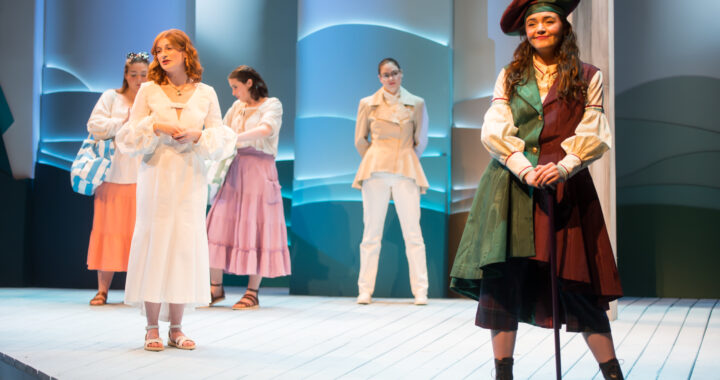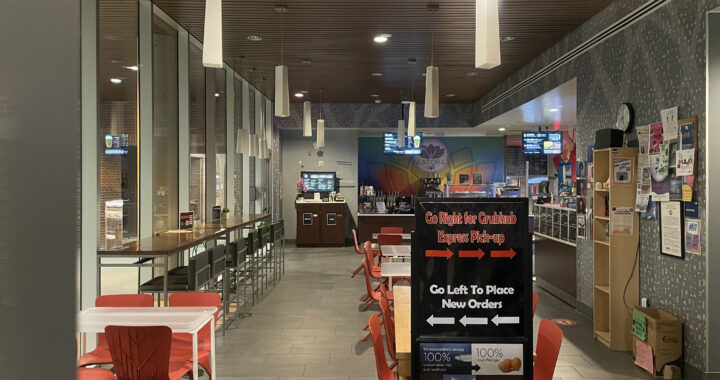Professor profile: Ginny Morriss researchers genetics
4 min read
Professor Ginny Morriss teaches students at UMW while pursuing her own research in genetics. umw.edu
by LEIGH HATTON
Senior Writer
Despite numerous setbacks due to COVID-19, professor Ginny Morriss and the students in her lab have finally been able to make progress in research this semester.
Morriss is an assistant professor of biology at UMW, and genetics is her area of focus. In addition to teaching upper-level courses on topics including biochemistry, Morriss is pursuing her own ongoing research. She is also mentoring students in their independent study work.
Morriss has two different research projects in progress. Both of these are focused on myotonic dystrophy, which is a genetically inherited skeletal muscle wasting disorder. One project uses fruit flies as a model organism for chromosome testing.
Morriss described the research process, which is using traditional genetics techniques.
“We’re devising specific mating systems so that we can actually manipulate the genetics of the fruit flies to either make muscle problems worse or make them better,” she said.
The second of the two projects is utilizing a mouse skeletal muscle cell line, in addition to human umbilical vein cells. In this project, the main question is how expressing a specific mutated gene will affect the original muscle cell line.
“We are specifically looking at genes about proteins that are involved in signaling to other systems,” said Morriss.
While Morriss and her students have been able to make progress this semester, COVID-19 has caused many problems for Morriss’s plans for her research.
“All of the stuff that I had initially planned on doing, we’re still at the very basic stages of that; we’re still getting things set up and getting baseline information,” she said. “And we probably would have been farther except that COVID hit. The lab didn’t get started until a year after it probably should have been started because of budget issues and a lack of students to help do any of the research since nobody was here.”
Other setbacks have been related to the supply line issues that have affected multiple departments on campus.
“We have to scrounge a lot to get the supplies that we need,” she said, “I had to train my students to basically be like squirrels hiding things away. I’ve had to make sure that, because of supply issues, [the students] stay really conscious and mindful about exactly what they’re doing so that we don’t have to redo it unnecessarily.”
One aspect of the research in particular has also led to additional challenges. One student, Grace Holcomb, has been working with a “finicky” cell line for the first time.
“Trying to keep those cells alive has been an interesting, fun little project for us because this is the first time I’ve worked with those cells as well,” Morriss said. “That student is basically my guinea pig for working with this type of cell line. And thankfully, she was in here over the summer. So she had a lot of time to work and try to figure out all the little minor details that are not in any of the protocols. The little things that nobody tells you about but are apparently critically important to keeping and maintaining these cell culture lines and using them properly.”
Holcomb, a senior majoring in biochemistry, described the experience of trying to find optimal conditions for the cells as a “labor of love.”
“We had never cultured these before,” Holcomb said. “We were culturing them according to the manufacturer’s guidelines but ran into some issues. It was a disheartening process to baby the cells and watch them struggle to get off the ground, but we found a solution in an online forum from other researchers who work with these cells. Persistence is key, and we got the cell line up and running. They require a lot of attention, so I hope that before I graduate, I can pass this on to a student who is prepared to spend a lot of time nurturing them.”
Despite these challenges, Morriss spoke to the importance of continuing research and giving students opportunities to be involved.
“Science is very practice-based like a lot of stuff; you can tell students how things work, but until they actually get their hands dirty and find out how things work, a lot of times they don’t understand it quite as well,” Morriss said. “Engaging in those processes is massively important for learning how these systems work in general but also learning skills that they can apply for any other work that they go into.”
Morriss’s research in particular is exploring something that has not been well-studied.
“Even though we’ve known about this disease for decades, there are still a lot of things that are unknown,” she said. “We know the actual gene that’s mutated, we know what the mutation is, but its effects seem to be very far-reaching.”
Morriss’s postdoctoral research suggested to her that studying the affected systems’ communication with each other might be more fruitful than studying systems in isolation. This led to her current work with specific proteins.
“Their whole function is to signal to other organ systems and tell them to do something,” she said. “Skeletal muscles are supposed to be receiving stuff from the vasculature, like blood flow into the muscles in order to deliver nutrients and oxygen and all of that.”
According to Morriss, the main problem is when the muscle is communicating to the vasculature in a different way. This leads to the muscle not receiving the nutrients it needs, resulting in muscular wasting from this genetic disease.
“There’s very little that patients have to support them as far as treatments,” she said. “Most of them just have to suffer with these effects. It’s possible that this information can be used to lead drug development in order to actually treat some things that are going on in this disease. Trying to understand how the disease itself functions can help to inform that process a little bit.”











